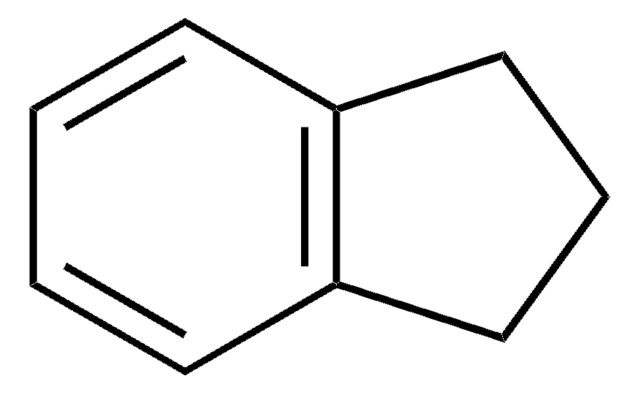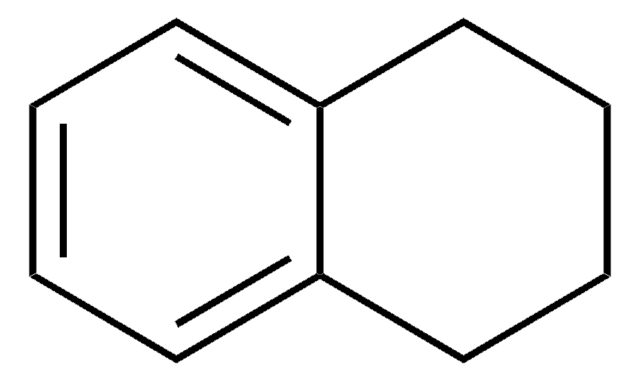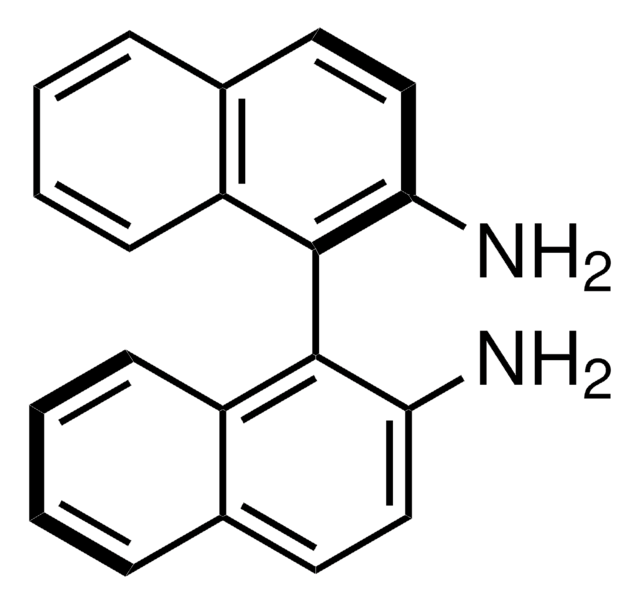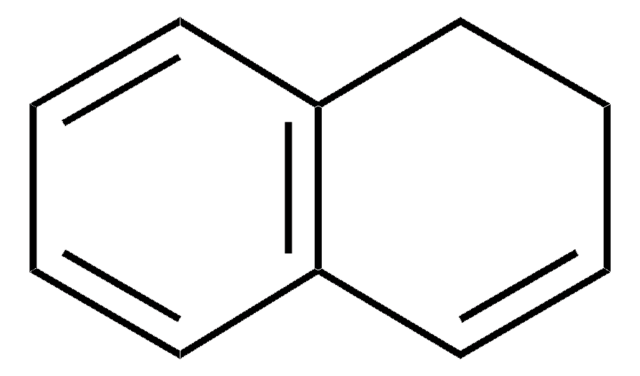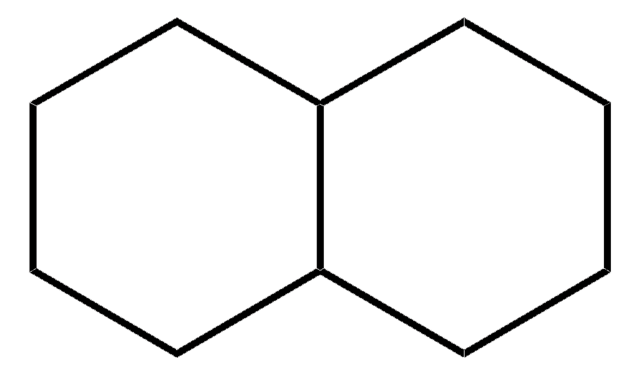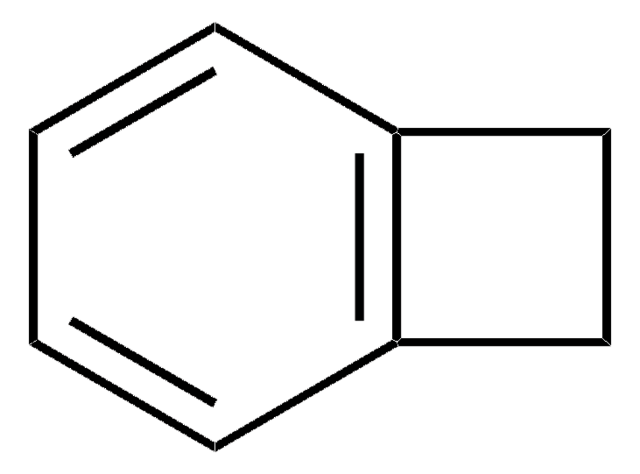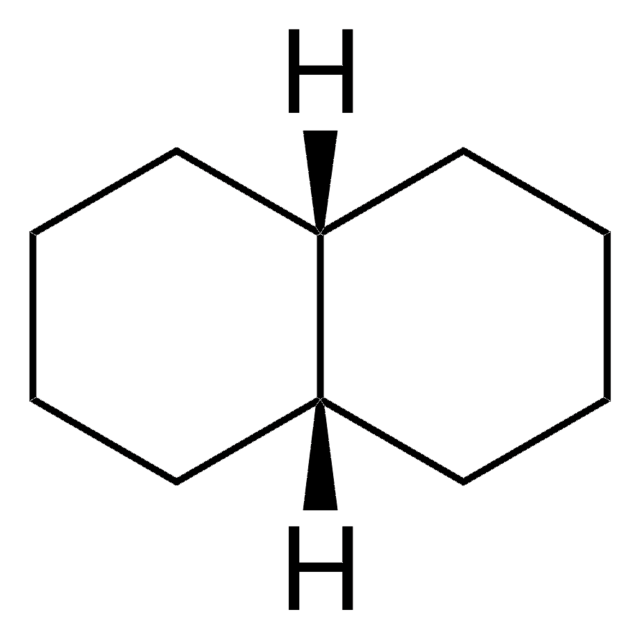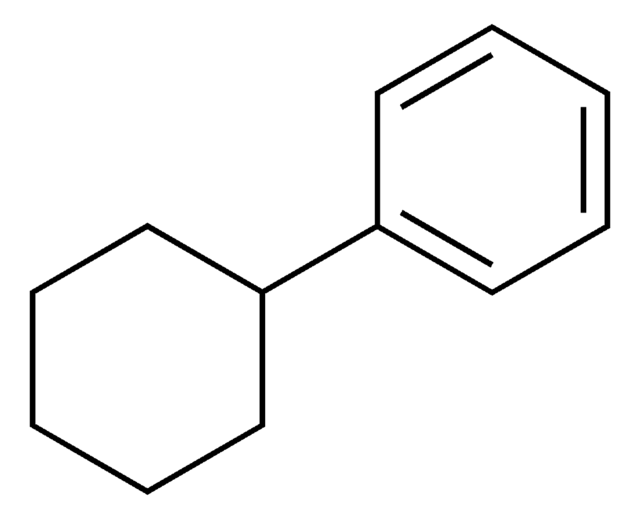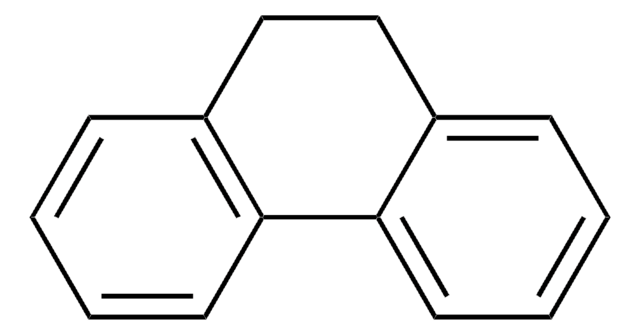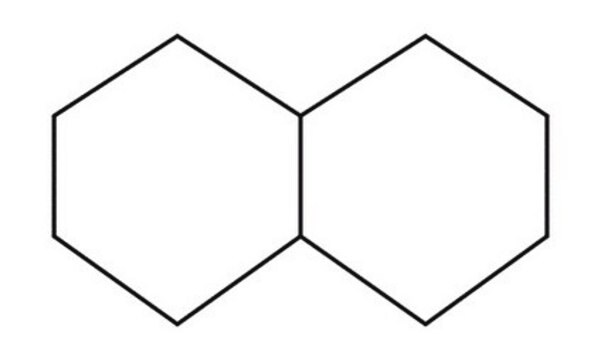522651
1,2,3,4-Tetrahydronaphthalene
anhydrous, 99%
Sinonimo/i:
Tetralin solvent
About This Item
Prodotti consigliati
Grado
anhydrous
Livello qualitativo
Densità del vapore
4.55 (vs air)
Tensione di vapore
0.18 mmHg ( 20 °C)
Saggio
99%
Forma fisica
liquid
Temp. autoaccensione
723 °F
Limite di esplosione
0.8 %, 100 °F
5 %, 150 °F
Impurezze
<0.005% water
Indice di rifrazione
n20/D 1.541 (lit.)
P. eboll.
207 °C (lit.)
Punto di fusione
−35 °C (lit.)
Densità
0.973 g/mL at 25 °C (lit.)
Stringa SMILE
C1CCc2ccccc2C1
InChI
1S/C10H12/c1-2-6-10-8-4-3-7-9(10)5-1/h1-2,5-6H,3-4,7-8H2
CXWXQJXEFPUFDZ-UHFFFAOYSA-N
Cerchi prodotti simili? Visita Guida al confronto tra prodotti
Categorie correlate
Descrizione generale
Applicazioni
Note legali
Applicazioni
Avvertenze
Danger
Indicazioni di pericolo
Consigli di prudenza
Classi di pericolo
Aquatic Chronic 2 - Asp. Tox. 1 - Carc. 2 - Eye Irrit. 2 - Skin Irrit. 2
Rischi supp
Codice della classe di stoccaggio
10 - Combustible liquids
Classe di pericolosità dell'acqua (WGK)
WGK 2
Punto d’infiammabilità (°F)
159.8 °F - closed cup
Punto d’infiammabilità (°C)
71 °C - closed cup
Choose from one of the most recent versions:
Possiedi già questo prodotto?
I documenti relativi ai prodotti acquistati recentemente sono disponibili nell’Archivio dei documenti.
I clienti hanno visto anche
Il team dei nostri ricercatori vanta grande esperienza in tutte le aree della ricerca quali Life Science, scienza dei materiali, sintesi chimica, cromatografia, discipline analitiche, ecc..
Contatta l'Assistenza Tecnica.